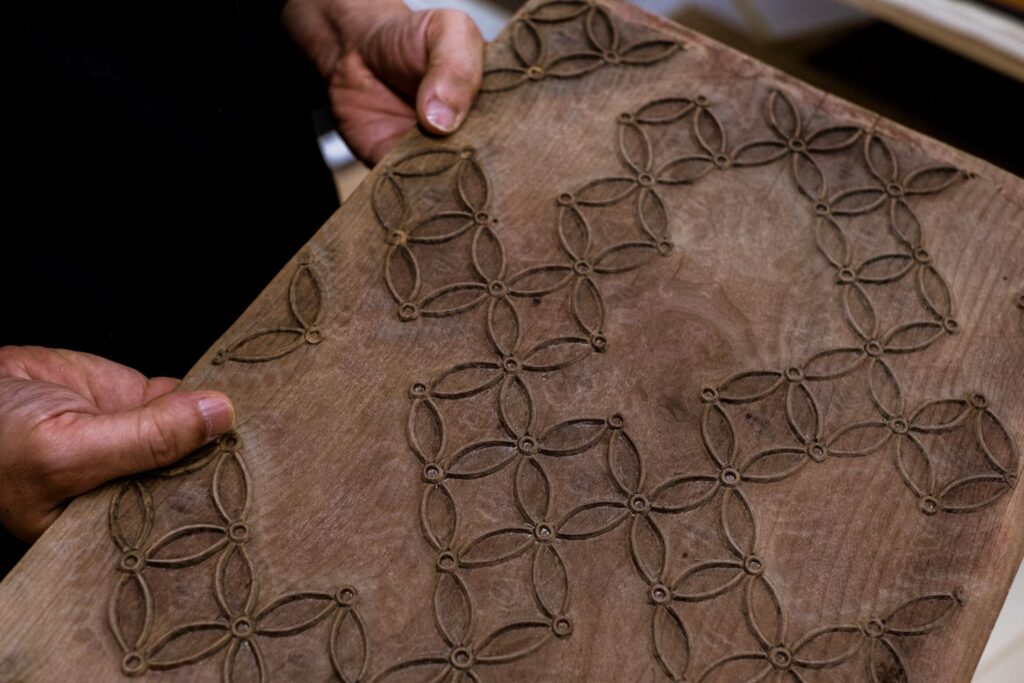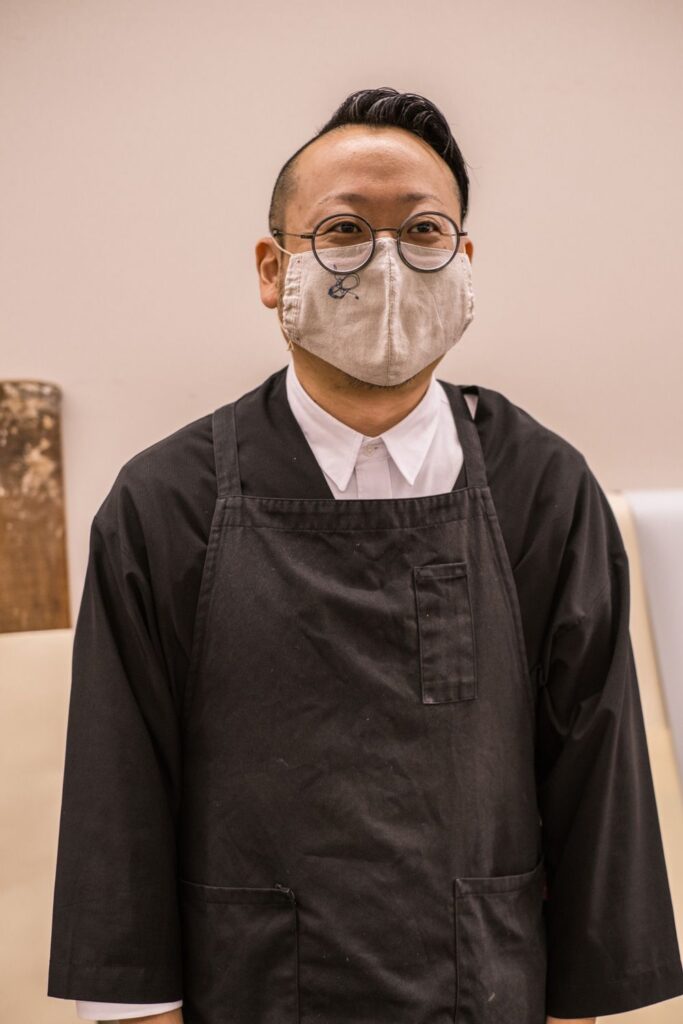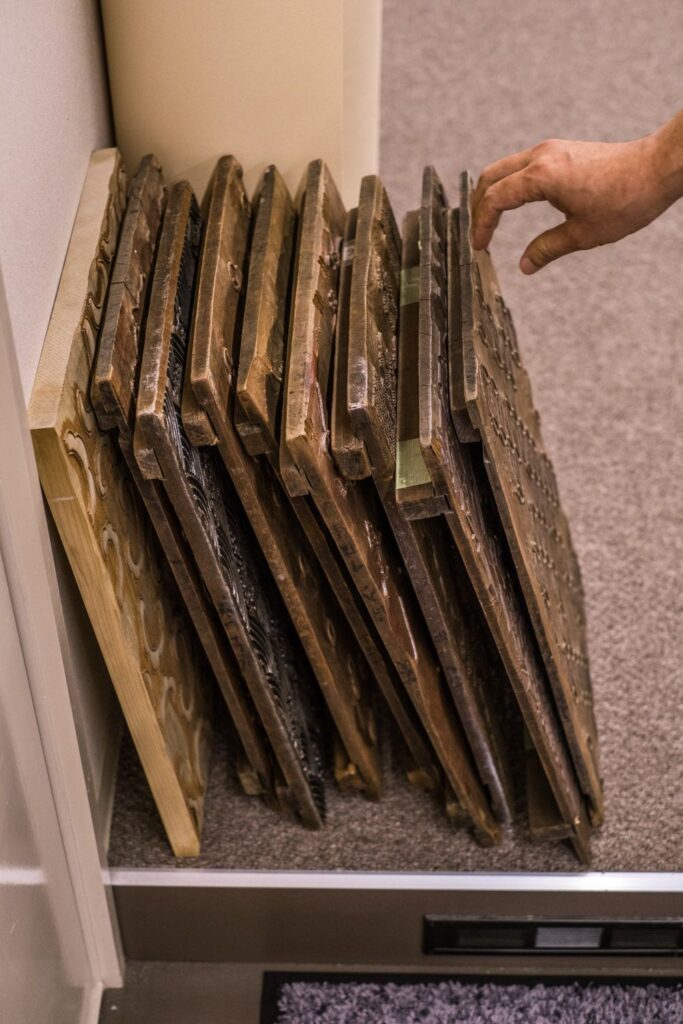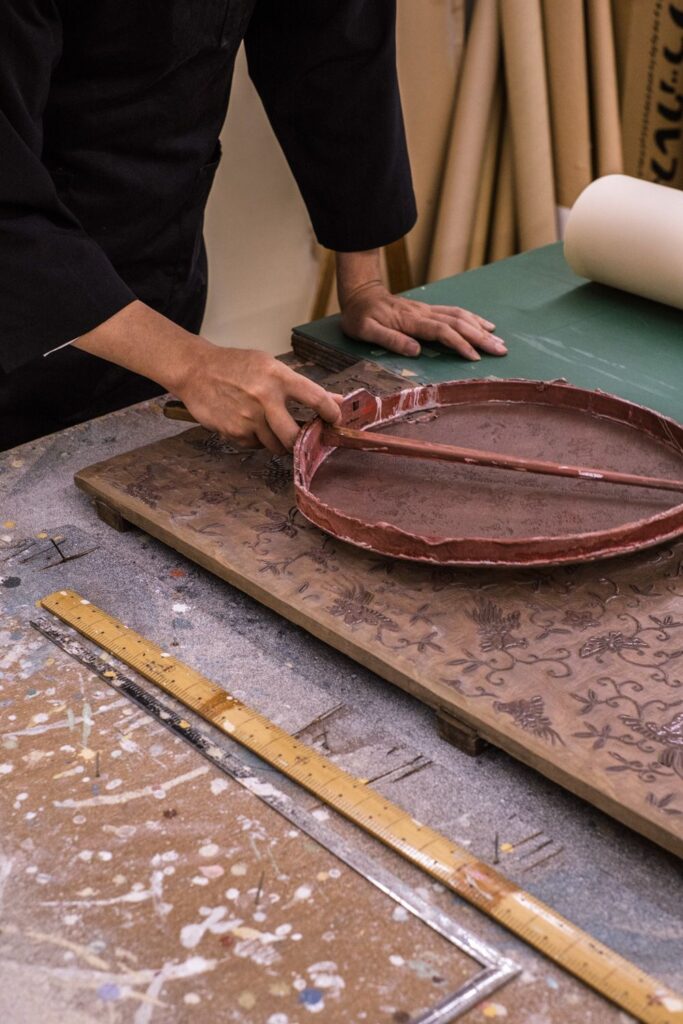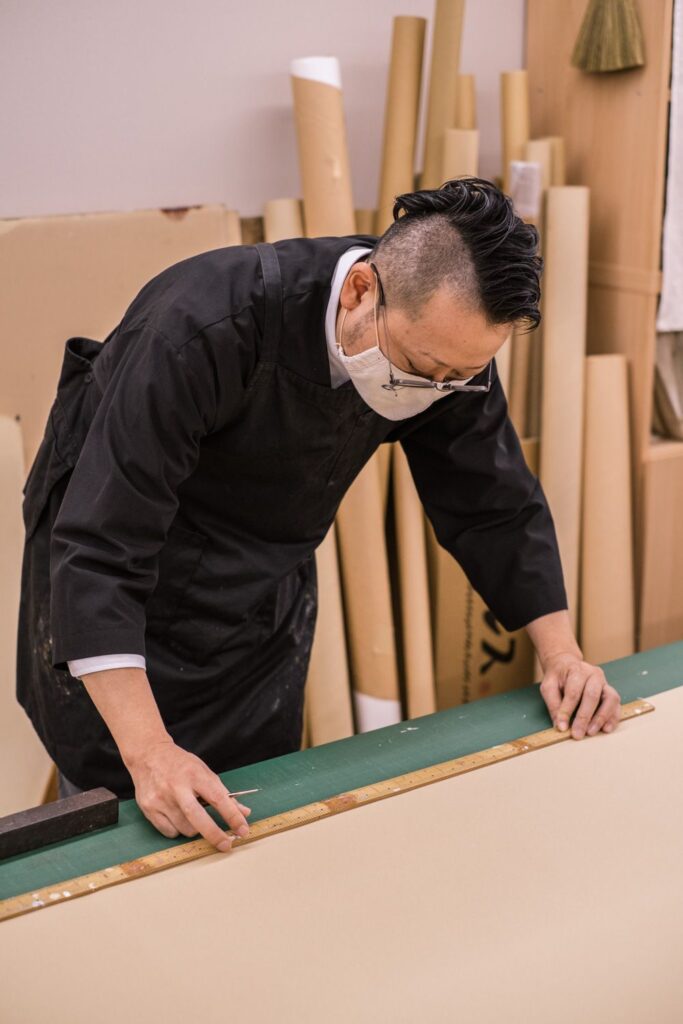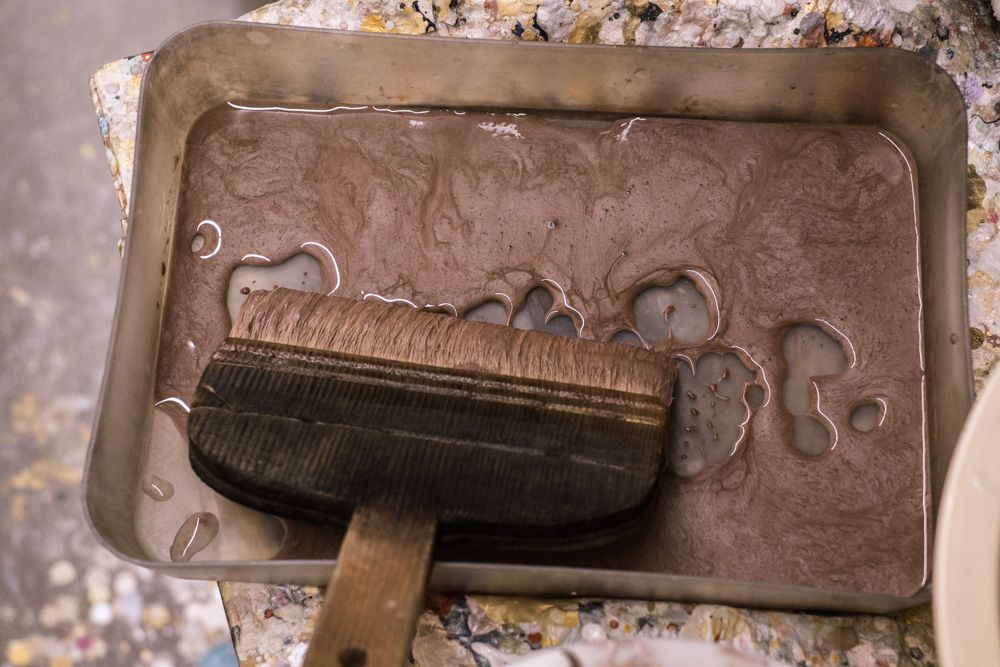Blog
Interview with Sachihito Kudo, Kyoto karakami artisan
2022/01/11
Note: this is the third in our series of articles focusing on the fascinating traditional craft of Kyo-karakami and its place in modern life.
Studio visit to Maruni, Kyo-karakami maker
Please tell us a little about your background. What in your personal life has influenced you to choose your career?
My professional experience included working as a DTP planner and designer for a print company and as a magazine ad editor in an advertising agency, when in the middle of vocational training for web development I received a call from Hello Work [Employment Service Center operated by Japanese government] asking me if I was interested in becoming a craftsman. I had an interview and became one! It just so happens that all of my jobs are related to paper, which I find interesting. The reason why I chose this profession is because I was introduced to it and passed the interview. I also feel like it was a stroke of luck.
What was the biggest challenge that you encountered on your professional journey?
I think that the most difficult part of becoming a karakami craftsman was to grasp the feel of working with paper.
Depending on the humidity and the temperature of the day, the end result may be good or bad. It is necessary to remember the feel of good and bad work and constantly improve our techniques because we want to provide the best work possible.
What do you love about what you do?
As a craftsman mainly dealing with commissioned work, I don’t use my creativity much. But when I create something on occasion, the most important thing is to have fun.
I believe that if you don’t enjoy yourself while you’re creating something, your work won’t be able to bring joy to other people.
What are the sources of inspiration for your creative work?
As a craftsman mainly dealing with commissioned work, I don’t use my creativity much. But when I create something on occasion, the most important thing is to have fun.
I believe that if you don’t enjoy yourself while you’re creating something, your work won’t be able to bring joy to other people.
How have the events of the past couple of years affected your work and your industry?
Many commissions have been postponed because karakami paper is often used for the interior design stage of large architectural projects. Families no longer get together during the Obon and New Year holidays, so the replacement of sliding doors has become non-essential for some period of time.
What wishes and words of encouragement for 2022 would you offer to the readers of our blog?
I think the world is still going through a very hard period right now.The people who keep us informed, like the writers of this blog, give us something to look forward to when things return to normal. And I hope that those of you who are afraid to go outside for fear of infection will take an interest in the interior design!
Please tell us why would you recommend your work/products to craft and design lovers. What positive impact they can make on people’s lives?
I personally think that karakami paper is a difficult product to handle. Since it is painted with water-based pigments, it cannot be touched with wet hands, and since it is handmade, it is inevitably a high-cost product. However, it reminds us to take good care of things and make them last longer. We are a company that deals in fusuma paper, and we would like to convey that fusuma is a Japanese door that is very much in line with the SDG [Sustainable Development Goals]. Although simple doors have become widespread, proper fusuma doors can have their paper, edges and knobs replaced or repaired. The fusuma paper of temples and other old places is usually replaced, and if it is treated with care, it can continue to be used for hundreds of years. Wouldn’t it be lovely to have your grandmother and grandchildren open and close the same fusuma doors as their ancestors of long ago?
If you plan to come to Kyoto and try your hand at the Kyo-karakami paper printing technique, book your experience here: Karakami atelier visit and printing workshops
Interview, translation & images by Anastasiya Bulkavets (ArigatoCreative.co)
